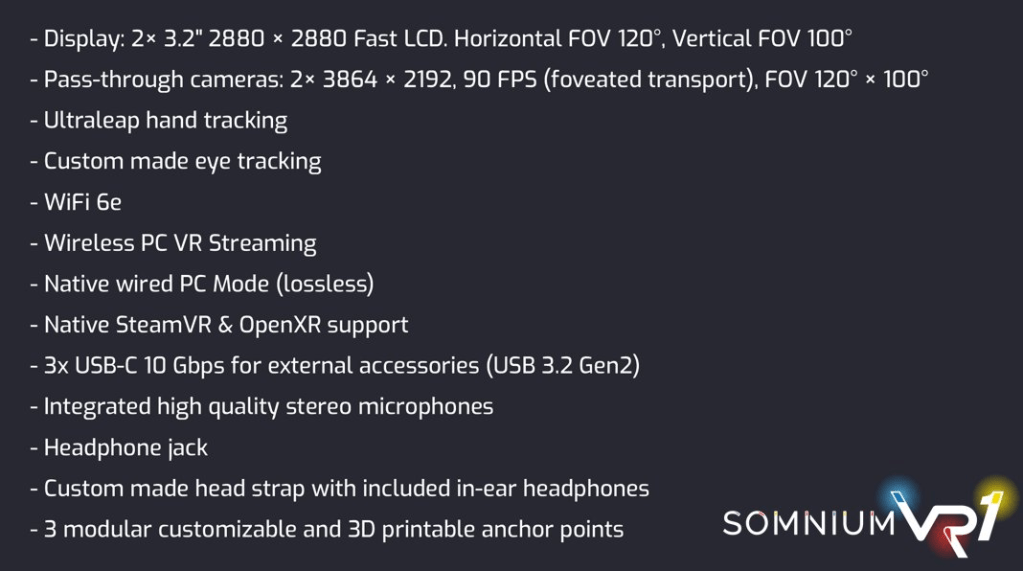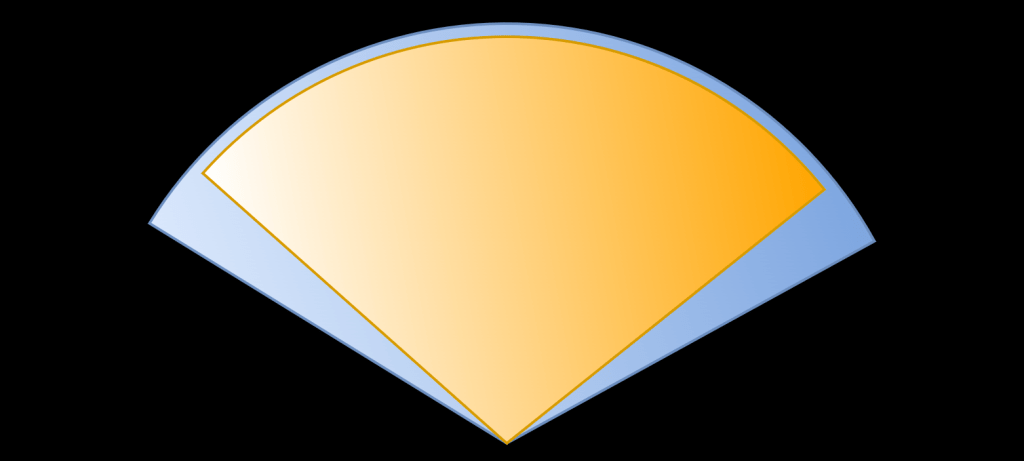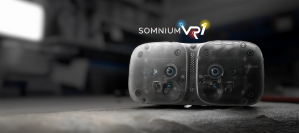The Somnium VR1 virtual reality headset has everyone at the tip of their chair ever since it was first announced the Somnium Connect conference in Prague in 2021. Not in the least by ThrillSeekers, the well-known YouTube channel dedicated to VR. The wait is almost over and at the upcoming CES 2023 event in Las Vegas, Somnium Space will show the latest functional DevKit and final design of the VR1.
A great reason to have a closer look at this headset and get to the bottom of all its innovation.

Open Source and Modular
Before diving into some of the more familiar specs, let’s talk about what makes the Somnium VR1 truly special: Its open source and modular, printable design.
Each user deserves to fully own hardware they buy and be able to customize, repair and enhance it anytime. We would like to provide an unrestricted hardware and software environment to all VR enthusiasts around the world. 3D models of the headset parts will be available so that any user with access to a 3D printer can print them out. Android OS source codes will be in a public GIT. – Artur Sychov, Somnium Space Founder & CEO.
One of the key partners is Prusa Research, a 3D printing company based in Prague, Czech Republic, so we can be sure these are not just empty promises. The modular and open source nature is revolutionary and promises a truly customizable VR headset platform. What’s more, the headset will even feature a port for direct access to sensors and cameras.
With this users will no longer be trapped inside a closed ecosystem, but be able to shift parts, and even develop new innovations on top of it. The implications could be far reaching and push the platform to new levels of quality and usability.
From the specs that were published by Somnium Space we can see that the VR1 will have 3 customizable and 3D printable anchor points. We suspect such anchor points allow for custom extensions to be mounted onto the headset as well as for replacements of existing parts.
This prospect alone is already amazing, but what makes us excited as well are some of the more familiar specs.
Visual Fidelity
Display

The Somnium VR1 will feature 2880 x 2880 Fast LCD screens. This places the VR1 among the top headsets with a resolution that is similar to that of the professional-grade Varjo Aero. Nice detail is that among the resolution leaders we find Vrgineers with their XTAL 8K headset. If you have read our previous articles about the VR1 you will know that Vrgineers is one of the other partners with whom Somnium Space develops the VR1.
Note that the Quest Pro does not come close with a resolution of only 1800 x 1920 per eye.
FOV
Headset design is all about the optimal immersive fidelity. This is not merely a matter of resolution, but also involves factors like FOV, audio, ergonomics, tracking quality, and more. As for FOV, this plays an important role, as a higher FOV can greatly enhance immersion.
What is important to remember however is that a higher FOV comes with a cost as the available pixels need to be spread out over a larger area. But there is every reason to believe that the Somnium VR1 can maintain great visual – edge-to-edge – clarity due to its high resolution, 2880 x 2880 screens.
The field of view (FOV) of the VR1 is 120 degrees horizontal and 100 degrees vertical. This places the VR1 among the headsets with the highest FOV. For example, the Oculus Quest 2 has a visible horizontal FOV just below 100 degrees.
Professional-grade VR Headset producer Vrgineers are among the leaders in this area, with their XTAL 3 having a FOV of 180 degrees. Another well-known brand that is known for its resolutions and FOVs is Pimax. Their flagship product Pimax Vision 8K has a 160 degree horizontal FOV.

The higher the FOV the better the peripheral vision.
It is not merely about the highest possible FOV, but about the total immersive fidelity and comfort and it looks like the Somnium VR1 managed to achieve a high FOV in a smaller size headset. Recent images have shown its size is comparable to the Pico 4, which is generally regarded as a an excellent, lightweight and very comfortable headset (but with a slightly lower FOV compared to the Somnium VR1).

Comfort
As mentioned, comfort is also a major factor when it comes to immersive fidelity. That a headset is well-balanced is more important than its weight, but both play a role obviously. A problem with for example the Oculus Quest headsets is that they are front-heavy and regardless of visual fidelity, you are always reminded of the unbalanced device which is stretching your neck muscles. That does not contribute to immersion. On the contrary.
The comfort of the Somnium VR1 is an unknown at this point, but on the images we can see it uses a 3-point headband, similar to the professional-grade Varjo Aero. So chances are the VR1 can be characterized by not only being lightweight, but also very comfortable.
The head strap includes in-ear headphones by the way.
Mixed Reality/Pass-Through Cameras
What is really interesting is that the Somnium VR1 also features 2 mixed-reality pass-through cameras with 3864 x 2192 resolution, 90 FPS and the before mentioned horizontal and vertical FOVs. They’re making use of foveated transport technology for improved performance and higher visual and immersive fidelity.
Suffice to say this enables the unlocking of whole range of immersive applications where the physical is mixed with the virtual.
Tracking
The Somnium VR1 uses Ultraleap’s high precision hand tracking to allow you to interact in VR without the need for VR controllers. Ultraleap’s platform has been pre-integrated and optimised on the standalone, untethered Snapdragon XR2, the core processor of the Somnium VR1.
The specs also mention ‘custom made eye tracking’. Eye tracking is a sensor technology that enables a device to measure eye position and eye movement. It can determine where your attention is and what you are focusing on. This info can be used to reduce GPU load and/or deliver a higher-quality graphics experience through foveated rendering.
The VR1 has native SteamVR (developed by Valve) support, allowing for SteamVR trackers and controllers. It also supports OpenXR.
Tethered and Wireless
The VR1 supports wired mode (lossless) as well as wireless PC VR streaming. It is equipped with WiFi 6e.
Other
The Somnium VR1 features 3 USB-C 10 Gbps ports and from earlier communication we know it will also feature a port for direct access to sensors and cameras. Combined with the modularity and the possibility for users to develop, 3D print and mount extensions, this could lead to some really interesting additions to the base platform.
Final Words
The Somnium VR1 has not been released at the moment of writing this article, so the real test comes when the final product is in our hands. But apart from the great specs, there is something very intriguing about this new headset and that is its design philosophy. We all know how it feels to be trapped inside a ‘walled garden’ or siloed system and being totally dependent on one hardware manufacturer or platform.
With the VR1, Somnium Space does not only challenge the VR headset market, but it makes an important statement about the future of hardware development. As Artur Sychov, founder and CEO of Somnium Space said:
Each user deserves to fully own hardware they buy and be able to customize, repair and enhance it anytime.
This totally aligns with the transition to more open, decentralized platforms. People should indeed own the hardware they buy and never be forced to stick to one manufacturer only when it comes to repairs, extensions and upgrades. Will this in the end hurt Somnium Space?
No, the key is to make people come back because of the quality, not because they are trapped. And this is why we are confident that pursuing quality is a core value at Somnium Space. We have seen that for a long time already in the VR platform they are developing and we are excited to see the same philosophy being manifested when it comes to their VR1 headset.
CES 2023
The CES (Consumer Electronic Show) is the most influential tech event in the world and will be held in Las Vegas from Thursday January 5 until Sunday January 8.
Somnium Space will be there with partners Prusa Research and Vrgineers at booth booth 15167, Central Hall, Tech East.














Leave a Reply